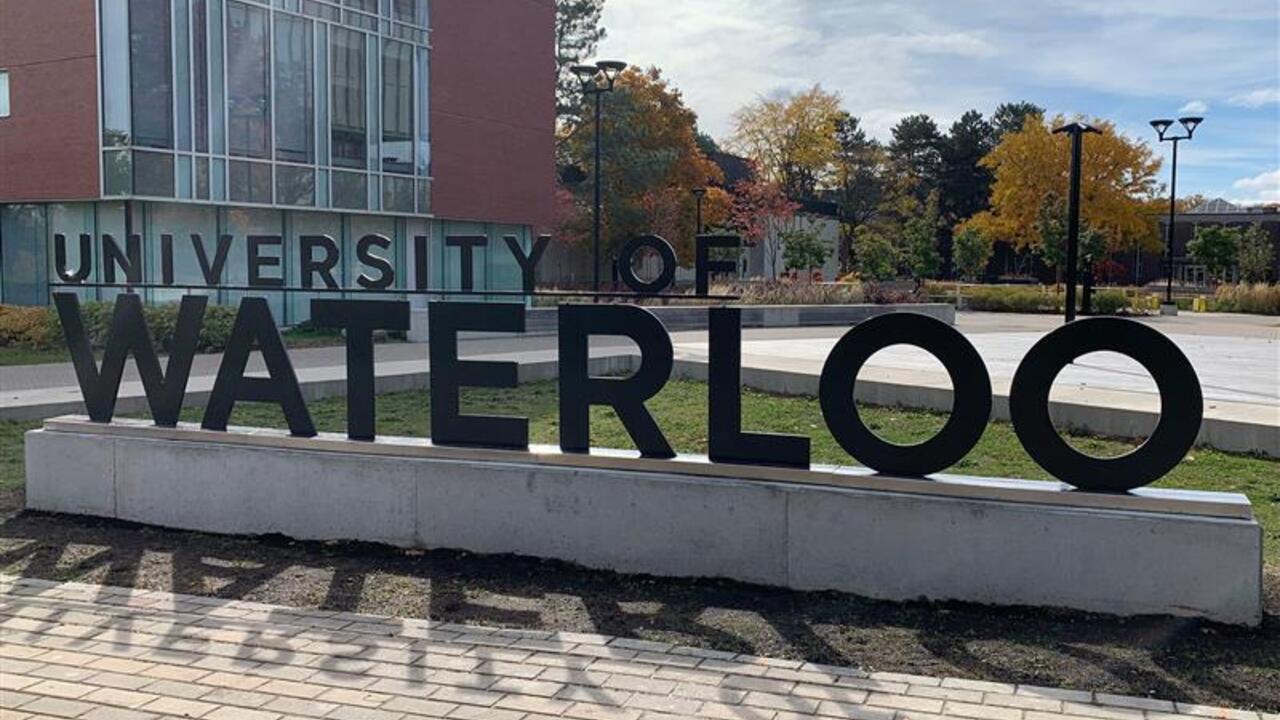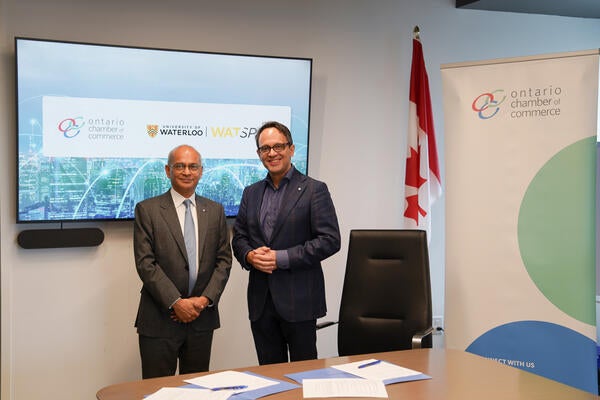
University of Waterloo engineers unveil two-way wireless breakthrough
Two-way wireless technology has been developed by a University of Waterloo engineering research team.

Two-way wireless technology has been developed by a University of Waterloo engineering research team.
By Media RelationsWATERLOO, Ont. (Thursday, June 14, 2012) - Groundbreaking two-way wireless technology resulting in vastly superior voice and data services has been developed by a University of Waterloo engineering research team led by Amir K. Khandani, the Canada Research Chair in Wireless Systems.
The new technology enables wireless signals to be sent and received at the same time on a single radio channel frequency. "This means wireless companies can increase the bandwidth of voice and data services by at least a factor of two by sending and receiving at the same time, and potentially by a much higher factor through better adaptive transmission and user management in existing networks," said Khandani, a Waterloo electrical and computer engineering professor.
Current wireless systems suffer from shortcomings similar to old walkie-talkies that don’t allow users to talk and listen on the same frequency at the same time. That's because the strength of the transmission overwhelms any incoming signal on the same frequency.
“Wireless is in desperate need of a breakthrough, and two-way comes at the right time," Khandani added. "The cost in hardware and signal processing complexities and antenna size is very low and virtually the same as current one-way systems. Two-way wireless systems will also have a profound impact on wireless networks in terms of quality of service and efficiency.”
The wireless advancement also opens the possibility to have ultra-secure transmission. “This can be done in ways that are much superior to current encryption techniques that are not truly secret, just hard to guess," said Khandani.
His research group is well known for introducing breakthrough ideas in wireless industry. In 2006, it came up with the idea of Interference Alignment, which radically changed the mindset about interference management, and it is now a mainstream in academic and industry research. Khandani predicts two-way wireless will reshape the future of the wireless industry, which is under overwhelming pressure for higher data rates.
The Waterloo Engineering research breakthrough is based on technology patented by Khandani in 2006 and issued in 2010, with many more innovations since then. He added that further details about the two-way technology development and a short history of other contributions in this area are available as a video clip at the URL address: www.cst.uwaterloo.ca/2way/.
The video clip also introduces many new applications for two-way technology such as methods for interference management, security enhancement, and a unique approach to wireless connectivity called media-based, which is created by embedding data in transmission media rather than in the transmitted RF signal. Media-based approach offers significant benefits compared to traditional MIMO systems even with a smaller number of antennas.
Next steps requires industry involvement by including two-way in forthcoming standards to enable wide spread implementation.
Khandani said the breakthrough would not be possible without the financial support from different federal and provincial sponsoring agencies, including the Canada Foundation for Innovation and the Ontario Ministry of Research and Innovation. “This support makes Canada, and in particular Ontario, a research paradise."
About Waterloo Engineering
The faculty of engineering at the University of Waterloo is a multi-faceted engineering school with eight academic units, home to about 280 faculty members, more than 1,825 graduate students and 6,550 undergraduate students. More than 34,500 alumni have made their mark in industry, academe and the public sector, in Canada and around the world. For further information, go to www.engineering.uwaterloo.ca.
About the University of Waterloo
In just half a century, the University of Waterloo, located at the heart of Canada's technology hub, has become one of Canada's leading comprehensive universities with 34,000 full- and part-time students in undergraduate and graduate programs. Waterloo, as home to the world's largest post-secondary co-operative education program, embraces its connections to the world and encourages enterprising partnerships in learning, research and discovery. In the next decade, the university is committed to building a better future for Canada and the world by championing innovation and collaboration to create solutions relevant to the needs of today and tomorrow. For more information about Waterloo, visit www.uwaterloo.ca.
Media Contacts:
Amir Khandani
Electrical and Computer Engineering Professor
Faculty of Engineering
University of Waterloo
519.888.4567 ext. 35324
khandani@uwaterloo.ca
Carol Truemner
Communications Officer
Faculty of Engineering
University of Waterloo
519.888.4567 ext. 33470
ctruemner@uwaterloo.ca
Waterloo news release no. 50

Read more
President of Waterloo EDC says the University of Waterloo plays a pivotal role in region’s economic development on the global stage

Read more
The faculties of Science and Arts introduce a new theatre and performance course tailored to Science students

Read more
Waterloo’s WatSPEED to provide businesses with access to AI upskilling programs in new province-wide initiative
The University of Waterloo acknowledges that much of our work takes place on the traditional territory of the Neutral, Anishinaabeg and Haudenosaunee peoples. Our main campus is situated on the Haldimand Tract, the land granted to the Six Nations that includes six miles on each side of the Grand River. Our active work toward reconciliation takes place across our campuses through research, learning, teaching, and community building, and is co-ordinated within the Office of Indigenous Relations.